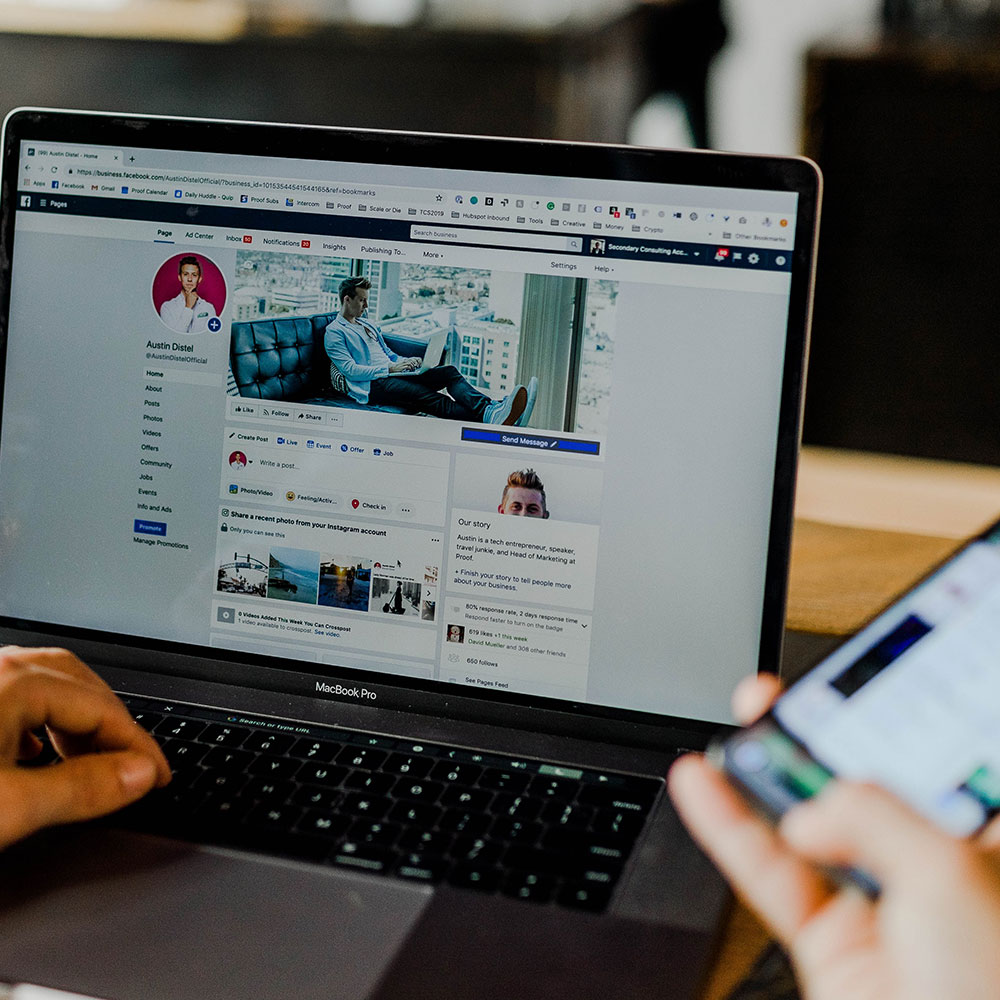Our Guide to
Local SEO.
The competition between local businesses is rife – if you want to put your business ahead of your neighbours, local SEO is the way to go.
As a population, our appetite and consumption of information have grown exponentially in recent years. Significantly, Google and other search engines have upped their game and refined their algorithms to provide consumers with even more relevant search results.
For Google, the users are their customers, hence why local SEO has evolved massively to provide them with the most relevant search results. Now, the user experience has been made more effortless and accurate – leaving users increasingly satisfied with results of their queries for the best businesses local to them.
So, how does Google do this? Keep reading to find out more…
What we’re going to cover:
- What is Local SEO?
- The History of Google’s Local Search
- How Do Google Reviews Impact My Business?
- What is The Map Pack?
- What is Google My Business?
- What Businesses can benefit from Google My Business?
What is Local SEO?
Local SEO is almost a niche within SEO, using different tactics to help location-based businesses to attract more traffic to their website from a specific location. Certain keywords are geographic in Google’s eye, for example, ‘IT Support’ or ‘Accountancy Firm’, whereby, if you search for this in Google, you will be provided with the most relevant businesses local to you.
Google provides different ranking options within local searches. This gives your business more opportunities to rank; the image below breaks down the location-based search results.

As can be seen, by the listing breakdown above, Google provides its users with different options for rankings, from paid ads and the map pack to organic listings; each ranking will be provided based on various ranking factors. In this blog, we are focusing on local listings and organic results.
The map pack ranks based on your GMB (Google My Business) Profile; if you’ve used Google before to search for a local business, e.g. a local restaurant, you may be familiar with the Map Pack providing suggestions of the most relevant restaurants alongside relevant attributes such as star rating, how many reviews they have and images. You can optimise your GMB Profile in many different ways so that your business appears for the relevant search queries for your customers.
Local searches also have organic listings for businesses to rank position 1 to 10 in vertical listings like any other search term; these will be ranked taking into consideration more traditional SEO ranking factors. However, there will be an emphasis on location, for example, the content of the page. Google will prefer content that mentions the location on the page as it will know that it is relevant to the search query.
The History of Google’s Local Search
To understand local search, we take a look back at the history of Google's local updates; this shows the evolution of how Google has evolved over the years to provide its users with the most relevant search results for local search terms and the technology they have used in doing so.
2005: Maps Merges with Local Business Centre
In March 2005, Google introduced Maps. This was a significant milestone in the evolution of SEO. What was then ‘Local Business Centre’ merged with Maps to formulate a hub of local business details. Born was a succinct bank of contact details and business information paired with directions to a location and map pinpoints. This was a massive step for Google, providing its users with more functionality, such as providing directions to locations, as well as providing businesses with a fantastic opportunity of appearing to users local to them. This merger highlighted the importance of ensuring that your business details were up-to-date to ensure people don’t miss out on potential customers by sending them to the wrong place!
2007: Universal Search Combines Blended Results
Here we saw the marriage between vertical (more general and holistic search results) and horizontal (Images, Video and News) search queries. Google started providing more blended search results rather than just a list of the top ranking web pages for its users; it started to introduce images, news and videos.
This also meant that Google One Box (the results box that only appeared when a local keyword search was carried out and only one business matches) started to surface in organic searches. This was the beginning of the map pack, and Google introduced more functionality and user-friendly results.
There was a huge knock-on impact on local businesses generating local traffic because, for the first time, business listings were well-positioned and more enticing than ever. Businesses that were providing more content were benefiting from higher rankings and more opportunities.
2010: Google Places Replaces Local Business Centre
2010 saw the end of Local Business Centre as Google Places offered a rebrand and updated in the form of geotags for specific markets, local advertising options and new image features. Significantly, Google wanted to match up the Places pages with local search results.
2012: Venice Takes Over to Make Google Local
Venice ensured that the Google algorithm accounted for a user’s specific stated location and output organic search results that accurately represented a given city or region. This was huge. Gone were the days when users had to type out the city or town where they wanted to find local services. Google now detects exactly where a user is and generates location-based results ready for the user to browse easily.
A key benefit came for businesses that had multiple locations. Now, businesses having multiple local page listings meant that they could effectively rank higher within each of their locations, significantly increasing their chances of success.
2014: Pigeon Makes Ranking Come Into Play
Pigeon reinforced the changes made with Venice but refined how businesses ranked on Google. The accuracy of answers to user queries was the focus, with local search results being closely correlated with well-established ranking signals like the quality of the content and the backend site architecture.
Now more than ever, Business listings and profiles need to account for such criteria in order to continue ranking well on local searches. Local businesses had to (and still do) compete with each other in order to climb to the top of the search result ranks. Today, it is vital to a business’s success to continually strategise and re-strategise in order to stay relevant and at their user’s fingertips.
2015: Google Reduces Use of Snack Packs
Google decided to rein in the use of its “Snack Pack” – this was a small but mighty change. The seven listings were reduced down to just 3 and so whilst the functionality of SEO didn’t change much, the competition and integral nature of ranking higher in local searches increased. Local restaurants, accounting firms and coffee shops that were once sat pride of place in the highly coveted top seven results, were now seemingly buried deeper in the web.

2016: Possum Plays Fair
The Possum algorithm update widened the scope for businesses that would often fall just outside of a specific local area, levelling the playing field by allowing those businesses who were in the vicinity of a local area to also show up in the search results if they held the right credentials to rank so of course.
Prior to Possum, businesses that geographically sat just outside of a town or city would suffer immensely, as they faced difficulty ranking for the location where they were actually very close to. Essentially, Possum utilised the user’s location and not just their search terms. This allowed Google to more accurately assess and provide the most relevant businesses based on a user’s search and their proximity to said businesses.
This was a huge shift but a much-needed improvement as more and more users began to make mobile phones their go-to resource for searching for a business, especially when out and about. When a mobile was able to provide a user’s exact location, it made complete sense to move away from the more static nature of search phrases.
2019: Natural Language Processing via Bert
NLP (Natural Language Processing) in simple terms organises the world’s digital information. In order for information to be processed, the data behind it has to be understood.
In October of 2019, Google unveiled its new NLP system in the form of ‘BERT’. BERT aided understanding of the intentions of a search and context of a search to improve results. Relationships between specific words and their meanings were manipulated to establish what exactly the users aimed for when conducting a search.
Importantly, for local SEO, this was a vital change as Google now looked to semantics and statistical models to ensure they understood the nature and context of a search, placing less emphasis and reliance on keywords and people physically typing in an exact location or phrase.
2021: Reviews Get a Refresh
Google wanted to prevent those pesky spam reviews and encourage users to leave high-quality and useful reviews. The first update came in April of 2021, and then next in December. Both updates were to target and promote reviews with the most in-depth research. This meant that media and content produced by professionals or experts in a field were deemed to be a more valuable and trustworthy source of information.
This was great for users and local SEO specialists alike, as the quality of reviews increased and businesses were more well-presented. It became clear that GMB and reviews, in particular, were powerful tools in an SEO tool kit in order to ensure that users were to trust a business.
How do Google Reviews Impact my Business?
What does everyone do before trying a new local restaurant or purchasing something online? They look for reviews. Reviews are a powerful way to demonstrate your credibility and trustworthiness in an industry or local area. When customers see multiple good ratings and positive reviews from people that have actually used a business, they’re more likely to give your business a shot.
Google has invested heavily in encouraging users to leave reviews for businesses as this will help them provide better results for their users, hence the demand for advertising campaigns using A-list celebrities. Clearly, for local SEO, reviews play a huge part in the ranking of a business and are not to be taken lightly.
What is the Map Pack?
As a population, we have all become so accustomed to Google Maps, with many of us relying on it daily to get around and find out about new places and services. But what is the Map Pack?
Google Map Pack (or the Google Local Map Pack) is the main section in the Google Local search results that displays the top-ranking local listings for your location or the desired location that you searched. The Map Pack consists of the list of top-ranking businesses and their details, alongside the actual map with the results pinpointed there for convenience.
As a business, the key is to ensure you have the correct details. Things like your address, opening hours, contact details and description can make or break when it comes to people interacting with your business.

What is Google my Business?
Google My Business, formerly known as ‘Business Profile’, is quite simply a tool that helps businesses set out the key information that current and potential customers would need to know.
Importantly, merely creating a profile does not give you full control over it; you also need to create a Google My Business account and have the management and editing resources to maintain the profile. Moreover, some details displayed about your business, such as reviews and street view images, cannot be altered. Though you cannot have full control over your business profile and you have to bear in mind some potential drawbacks, Google My Business is a fantastic tool which offers users a cohesive and honest overview of what you have to offer!

What Business Can Benefit from Local SEO?
It isn’t just restaurants, dry cleaners, hairdressers, and cafes that benefit from local SEO. Local SEO should be a consideration for any business with local search terms. Businesses like accountancy firms, law firms, IT support providers and estate agents all too often have local search terms relevant to their businesses.
Many B2B businesses will have a range of different keywords that could generate traffic for their business, some location-based searches such as the example above, ‘accountancy firm’ and some more detailed service-related terms which may have a more specific search intent and be higher converting, however, they would be subject to Organic SEO rather than Local SEO tactics.
For some businesses that operate within a location or catchment area, Local SEO should be strongly considered to generate business from the locals searching for your services in your area.
If you want to find out more about how your business can take advantage of Local SEO then get in touch with Notorious Online today!







